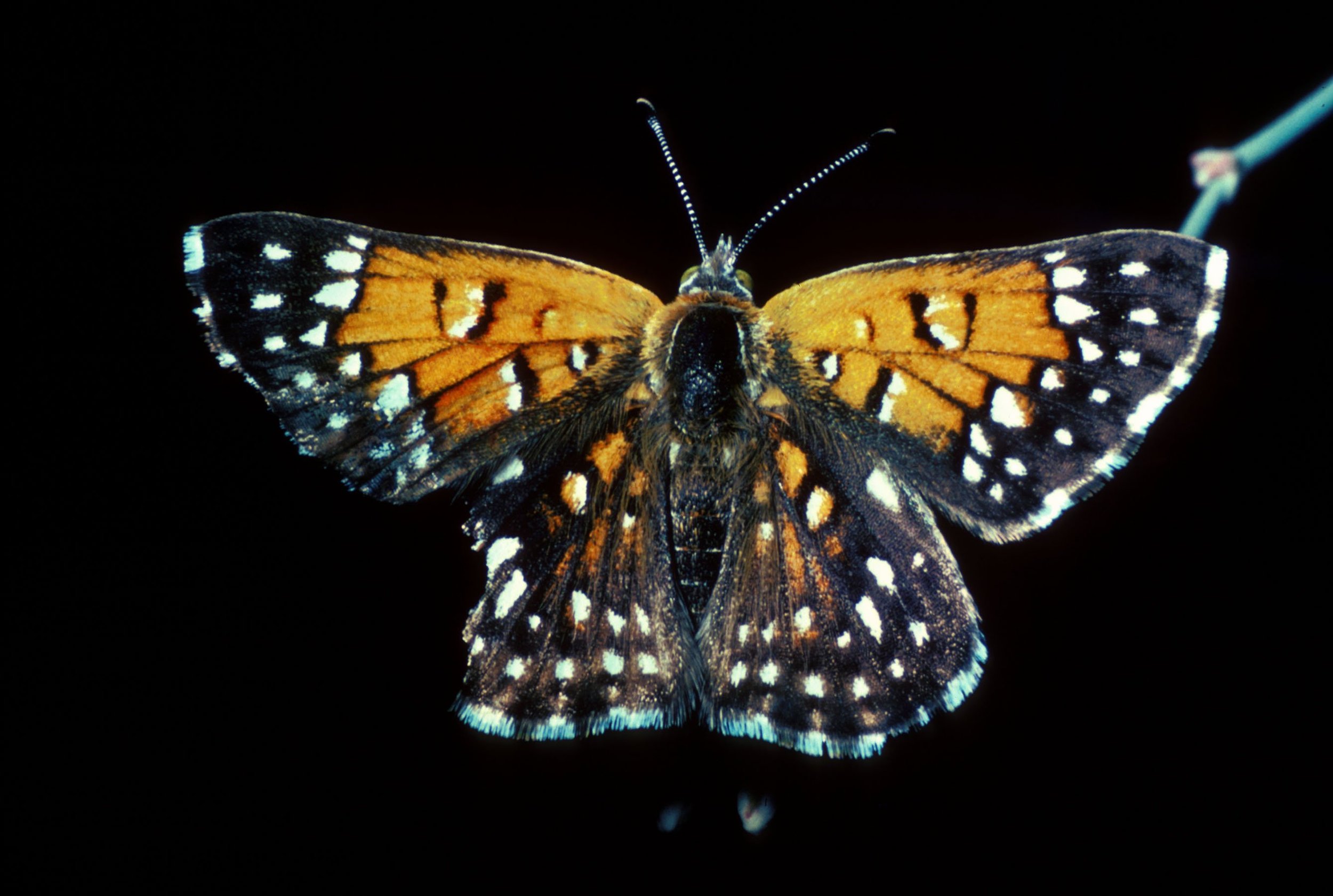Apodemia mormo (Mormon Metalmark Butterfly)
Credit: USFWS
about the species
The Mormon Metalmark Butterfly (Apodemia mormo) is one of California’s only representatives of the family Riodininae. Its taxonomy is not well resolved, and we collectively refer to A. mormo and A. virgulti in California as A. mormo. The range of A. mormo spans much of southwestern North America, from southern British Columbia, Canada to northern Baja California and Sonora, Mexico. In California, A. mormo occurs in metapopulations distributed from sea level all the way up to 2500 m. Populations can therefore differ greatly in local habitat and climatic conditions. Larvae feed on a diversity of Wild Buckwheats (Eriogonum spp.), and distributions of A. mormo populations are principally limited by occurrences of these plants. Observers lucky enough to catch a glimpse of A. mormo will note they are particularly mesmerizing to watch fly, often looping in circles and even completing figure-eights. When perched, their complex and beautiful wing patterns will impress any butterfly enthusiast. Throughout California, many A. mormo populations are declining due to habitat loss and climate change, making it a species of conservation concern. The federally listed subspecies A. m. langei occurs exclusively in the Antioch Dunes National Wildlife Refuge, California, and is among the most imperilled butterflies in the world.
why species was selected
There is a clear conservation need to resolve the taxonomy of A. mormo and A. virgulti in California. Similarly, the genomic and ecological distinctiveness of the endangered subspecies, A. m. langei, requires re-evaluation using modern methods. Whole-genome sequence data will allow us to identify fine-scale population structure local adaptation to ecological and environmental conditions that has rapidly evolved since population declines started within the last century. This information will be used to ensure translocation and reintroduction efforts focus on populations that are most compatible. These research goals have been identified as key conservation needs by our U.S. Fish and Wildlife Service (USFWS) partners.










